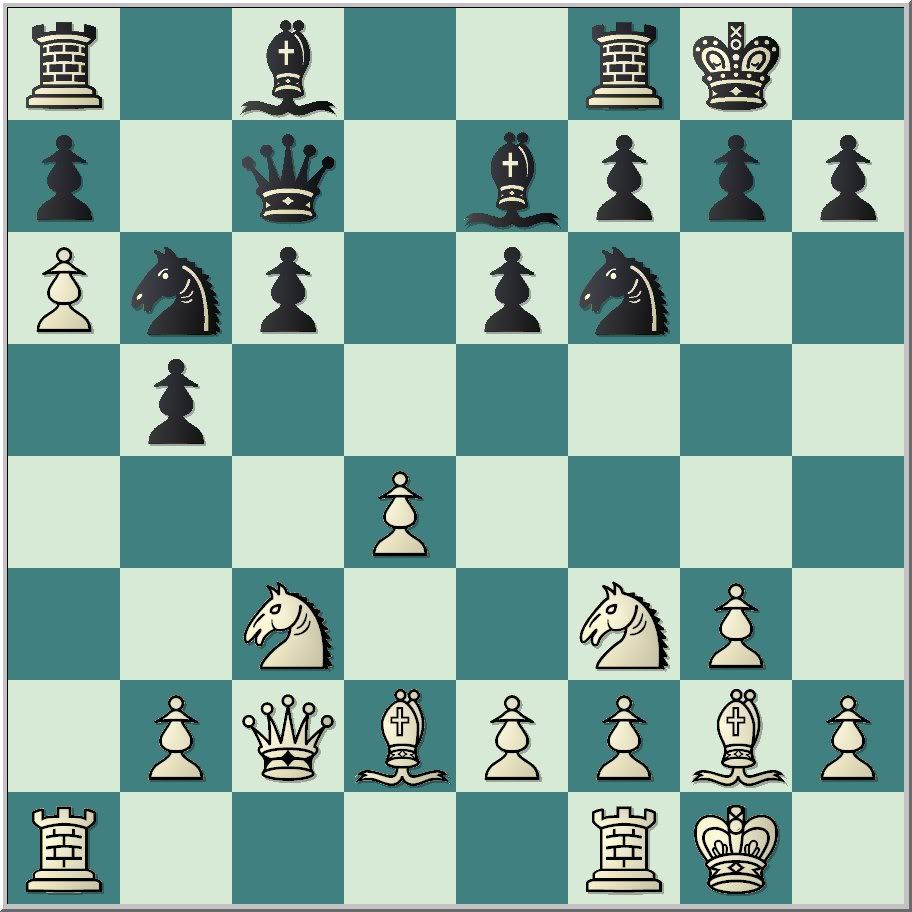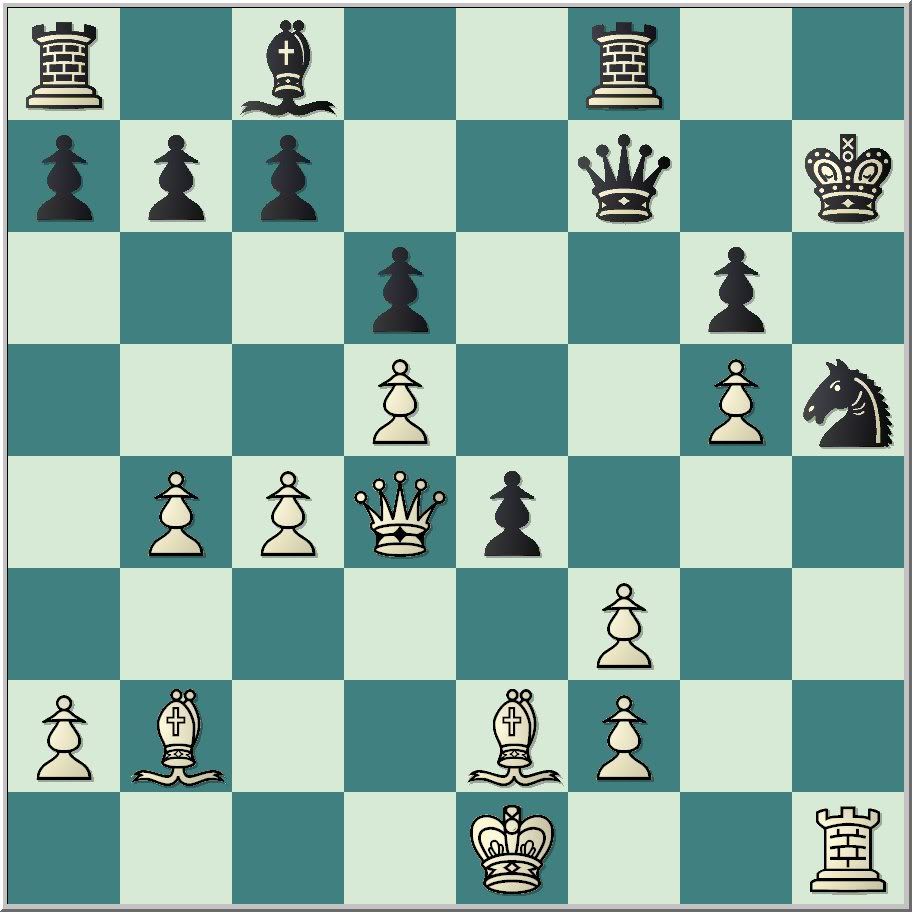The past several have been from my own games on Chess.com. Some are three days per move; others three minutes per game.
In the first, White made several weak moves in the opening: senseless pawn moves, and his light-squared bishop moved six times in the first thirteen moves. Black (me) sensed an opportunity.
Black to move

The second features an elementary tactic that reveals how badly the Black side of the a Closed Catalan can become with one or two subpar moves that look sensible on the surface.
White to move

Pressing the attack against a vulnerable king emerges as the theme in the next.
Black to move

If I wake before my alarm sounds, I might play some blitz online. Seven three minute games against one opponent ended at 6:00 am with this gem.
Black to move

Surprisingly, although a rook ahead, Black's position is critical. One move maintains the advantage. The second best move, according to my trusty helper--Hiarcs 12--leads to a forcing continuation in which White emerges a pawn ahead.
My opponent played a terrible move--mere seconds remained in the game.
25...exf3??
I missed the opportunity presented by this blunder (forced checkmate in four).
26. Bxf3??
Black again has a winning position, and the best move is much easier to find than a moment ago. He erred.
26...Bf5??
Finally, I found my way, and the conclusion of the game was simple. Even so, Black's most stubborn defense, had he found it, might have called for more than my pre-coffee capabilities can muster in the early morning.













The last one is easy, on has to play Rxh5+ instead of 26. Bxf3.
ReplyDeleteI guess the first one is Bc4 followed by Nd3+.
The rest of the positions i cannot solve in the five second glance i have time for so your other commenters have still plenty of work put out for them.
Hey Jim, any reason you use Hiracs for your engine? - I've seen it used in a few places but I understand it doesn't quite measure up to Rybka - but I was wondering if maybe it's better at finding "human" moves or something
ReplyDeleteHi Russ,
ReplyDeleteI don't have Rybka, except version 1.1, which was free as a UCI engine. I've been using Hiarcs since before Rybka existed, and have been happy to see that Hiarcs still holds its own against Rybka in competition: Hiarcs beats Rybka in World Computer Championship!.
I also use Fritz and a battery of free engines.
A few years ago, Hiarcs had better positional understanding than the competition. Fritz has improved, and Rybka pushed the standards to a new level. One of these days I'll buy Rybka, but will probably continue using Hiarcs.
Problem 1:
ReplyDelete1...Bc4 hits the queen and prepares Nd3+. White overlooked a defense and was mated quickly by bishop and knight. Even with best play from this position, White's position is terrible due to weakening pawn moves and wasting tempos moving the light square bishop to and fro.
Problem 2:
1. Nxb5 wins the pawn and chases the queen.
Problem 3:
1...Rxc3. White cannot capture the rook due to Nxf2#.
Problem 4:
25...Rg8 is the only move that retains an advantage. 25...Bf5 is second best and permits White a forcing sequence that results in a one pawn advantage for White.
White's control of the h-file and the long diagonal ties down the queen. Rg8 permits the queen to play along the f-file.